
Words by Shane Kurup
Photography by Paul Read
‘Excellence and zeal’ is the motto of Leicester’s De Montfort University, one of the UK’s leading lights in art and design. And one of its latest ventures, which is approaching its culmination after more than a year of development, certainly lives up to this mantra.
“Artifacts Live: A Legacy in Leather” – a collaborative effort between the university, Northampton’s Museum of Leathercraft and the Leathersellers – is the brainchild of Gillian Proctor, Associate Professor, leather liaison and project instigator at De Montfort University. It sees final-year students draw directly on the heritage of leathercraft to design their grading collection
Working in tandem with the curator of De Montfort University’s museum, Elizabeth Wheelband, Proctor chose objects of varied origin and history from the Museum of Leathercraft to provide the creative stimulus for the project. “We selected 20 artefacts from the 14th century right up to pretty much the present day. Where possible we chose objects in pairs, so that there’s a tentative link between them.” The collection of objects included a 17th century Kyoto Samurai saddle, an 18th century Bavarian ceremonial horse harness, a Native American tunic and a 15th century Venetian gondola chair. More modern items are a 20th century lancer’s helmet and 1940s water-resistant military suit developed for the Baltic campaign. This assembly was presented to the students, who were asked to select two objects each to inspire their own designs.
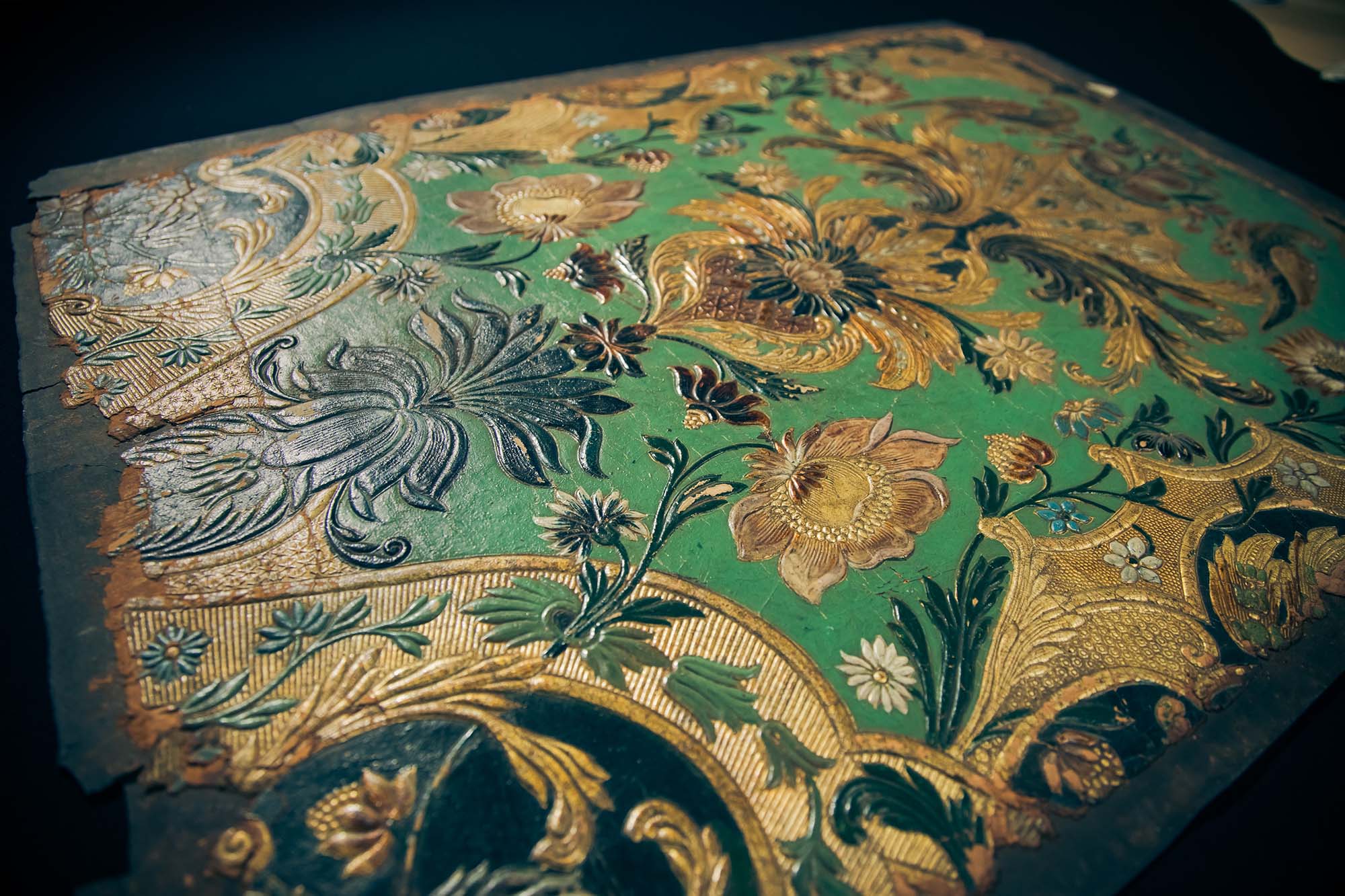
The seed of the idea came to Proctor in October 2022 when exploring an option to digitise the collections at the Museum of Leathercraft. “I felt we could do something even more exciting. I only like to do things that are fun and sexy,” says Proctor, living up to her passion for contour fashion. She went back the next day with the “Artifacts Live” proposal.
Students from the Schools of Fashion & Textiles and Art, Design & Architecture who enrolled on the course were encouraged to work in pairs from differing disciplines. “By mixing them up, we thought it would bring a new parameter to the project and the way it would be approached by each individual would be different – that the meeting of minds would hopefully spark fresh, innovative ideas,” explains Proctor.
Working with the artefacts meant learning about how they were made. “The key challenge for the students has been that if they chose an object for the technique it showcased, they had to teach themselves how to do it. They’ve had to do their own research, but we’ve helped them with certain elements.”
To help nurture these skills Proctor enlisted local craftspeople like Giulia Mio, a couture milliner based in Leicester’s art and design hub, Makers’ Yard, who taught the students how to reproduce the leather flowers on a 19th century framed diorama panel from the museum’s collection.
The Leathersellers also funded field trips to three leading manufacturers for the students to hone their techniques further, including visits to the London studio of veteran leather designer and craftsman, Bill Amberg, UK tannery Pittards and the repair workshop of luxury fashion brand Mulberry. “We had to peel the students out of each place. When we were back on the coach and driving back to Leicester, they weren’t texting or posting on social media – they were completely engaged and chatting about the experience. The visits inspired a real thirst for the project – and then we let them loose on the artefacts,” recalls Proctor.
“The tactile nature of the object inspired the look of a bag she created, which features hole-punch detailing and embroidery reminiscent of the traditional Japanese Seigaiha wave pattern on the saddle.”
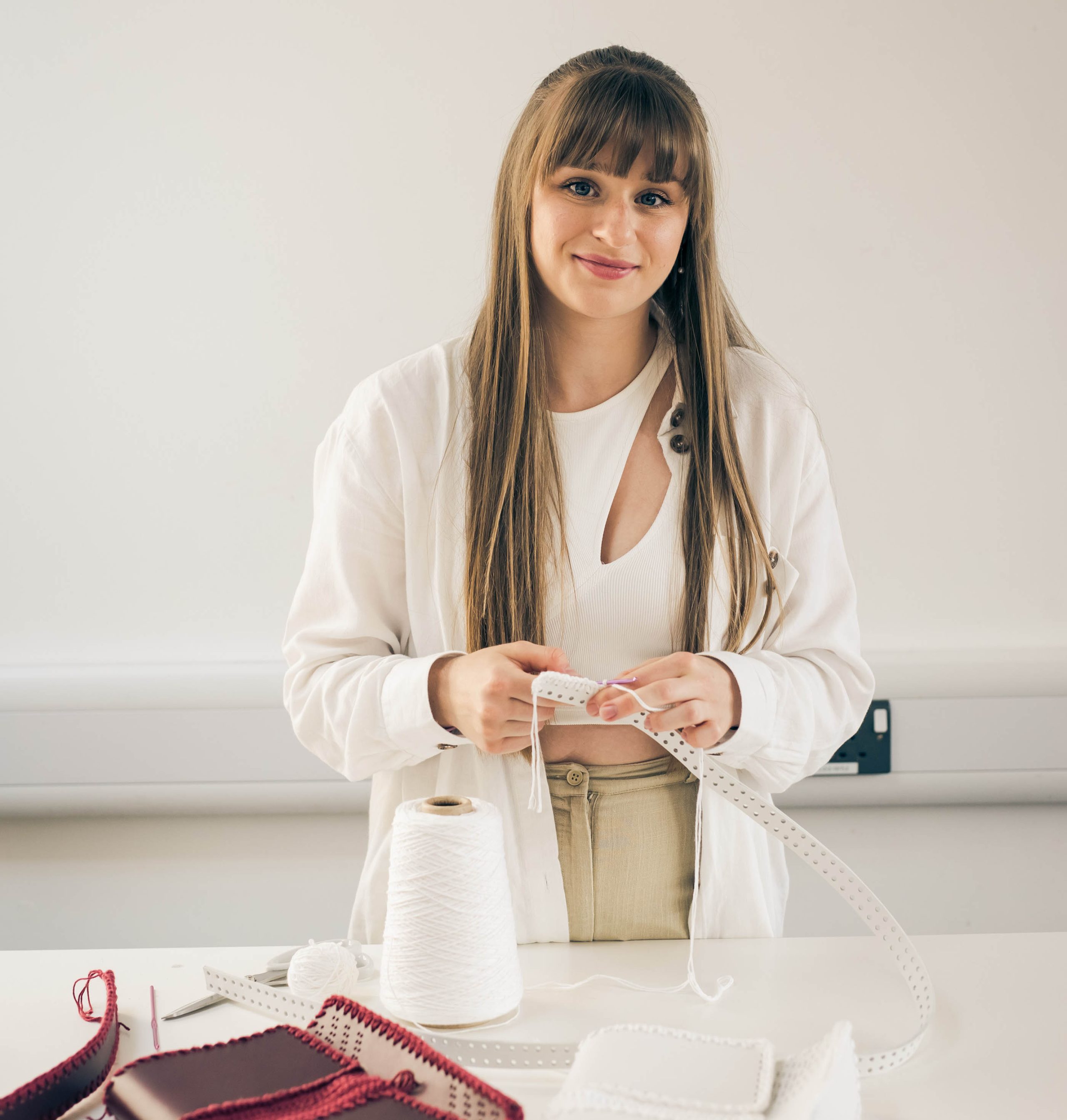
Students applied the skills they acquired to their own objects, combining them with the modern craft techniques and technologies taught at the university such as 3D printing, laser cutting, holography, electro forming, digital enhancement, moulding, embossing, AI, virtual reality and photography.
Lucy Dollery, one of the ten students involved in the project, studied Fashion Textiles, a course she picked for its practical, hands-on nature. She chose two of the equestrian objects from the selection: the Samurai saddle and the Bavarian horse harness. “I was drawn to the saddle because it has a lot of layers – there’s a gilt leather layer underneath and other layers on top that build up and a seat section which almost looks like a lacquered wood. The structure, textures and patterns were really interesting,” explains Dollery. The tactile nature of the object inspired the look of a bag she created, which features hole-punch detailing and embroidery reminiscent of the traditional Japanese Seigaiha wave pattern on the saddle. The Bavarian horse harness provided the stimulus for a tabard – a short coat-like garment that was popular in the medieval period. It has been woven together with strips of leather in a circular shape, echoing the structure of the harness. “They’re all woven and slotted through each other, which references the way the harness would have sat over a horse’s head.”
Also drawn to the equestrian objects was Olivia Bodak, who came to De Montfort University from her native Poland to enrol on the Contours Innovation MA, a specialism in lingerie and undergarments. Her selection of the Samurai saddle was not just for its aesthetic merit, but its symbolism. “I liked the shape and construction, but I also loved the meaning behind the Seigaiha pattern, which stands for power and resistance. I want my collections to empower women, so that was a nice link,” she explains. This sense of empowerment can be seen in Bodak’s lamb nappa jacket, which integrates a corseted waist with 3D-printed panels in the form of the Seigaiha wave. “With the harness, I really loved the combination of various textures, from the weaving to intricate embroidery and quilting,” she says. Referencing this play on textures, Bodak created a 3D-printed trench from offcuts of Japanese plonge leather, prized for its thin, supple quality. It also has a corseted waist made with a quilted texture akin to pineapple skin – a homage to the moulded embellishment on the harness – while the trench’s belt also incorporates the Seigaiha pattern.
Imogen Sullivan, who read Contour Fashion, has a background in bespoke bridalwear and wanted to bring this experience to her final collection. She found inspiration in the late 19th century moulded art panel and Elizabethan gauntlet gloves, which were embellished with pansies sewn with gilt thread. While the art panel provided structural inspiration for her pieces, it was the cultural context of the gauntlet gloves that fired her imagination. “I found out that these gauntlets would have been gifted during marriage, which chimed perfectly with the theme of my collection,” she explains. Sullivan learnt to replicate the leather blooms in the class run by milliner Giulia Mio, which she applied to a pair of opera-length leather gloves and an Elizabethan-inspired corset that have a modern subversiveness not usually seen in bridalwear.
Ana Del Rio Mullarkey, who came to the university from Madrid to enrol in the Fashion Design BA, credits part of her interest in apparel design to the workshops she attended as a child at Madrid’s fashion and textile museum, the Museo del Traje. Her first muse among the selection of artefacts was the miniature 16th century French strong box. “I was attracted to it because of the texture and techniques it exhibits. The leather is moulded over panelled sections, and it just had such intricate details.” Del Rio Mullarkey, who likes to play on the ideals of masculine and feminine tropes in her work, was also drawn to the piece for this reason. “It’s quite rough, but beautiful because of all the detail. It has beauty and strength to it,” she observes. A hand-painted leather fan was her second object of choice, which she liked for its cultural context. “It was a link to my Spanish heritage, and I wanted to bring an element of my culture into my work”.
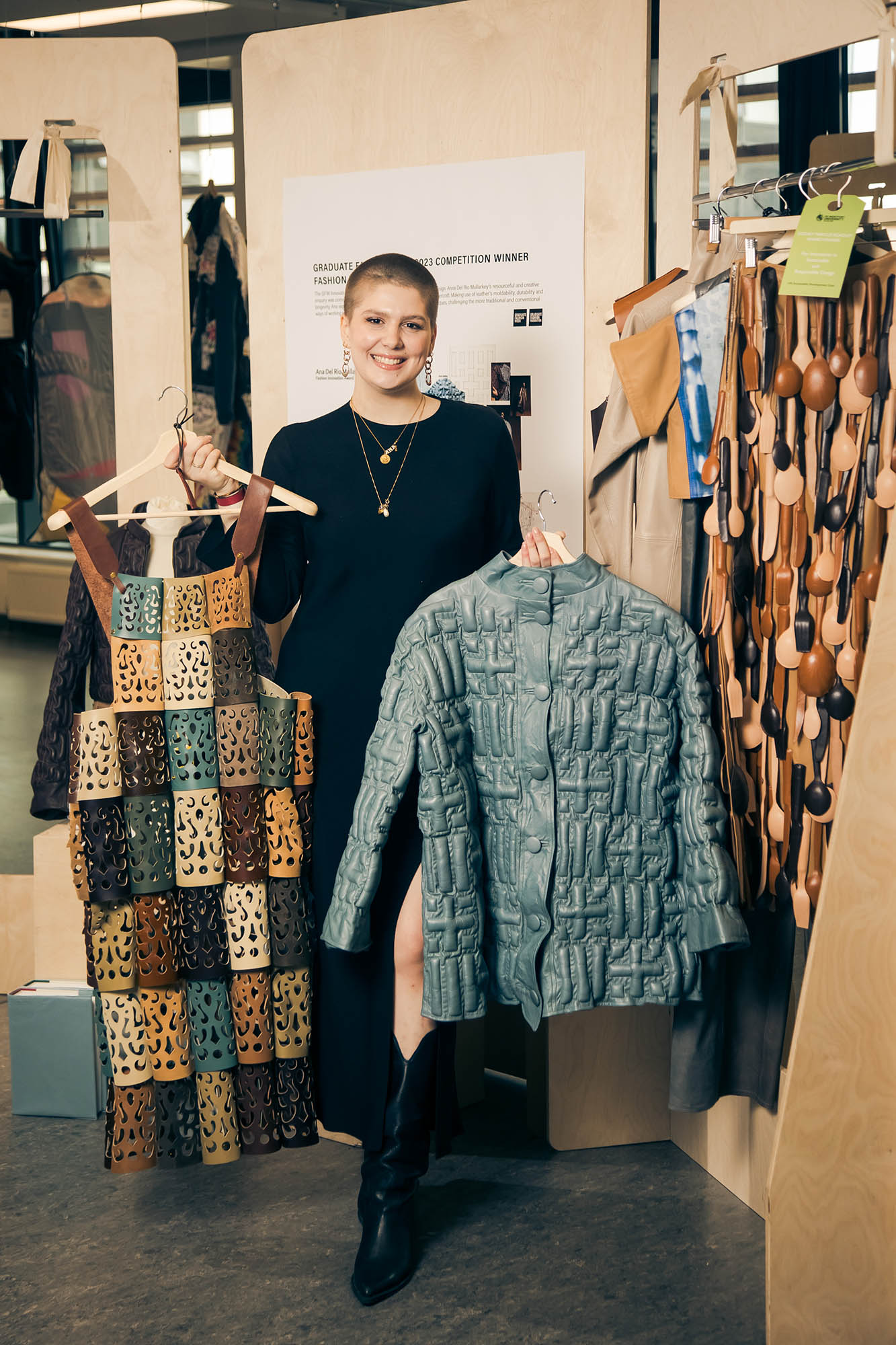
These objects led Del Rio Mullarkey to produce three leather outfits, consisting of a perforated apron dress of multi-hued vertical strips that fold into each other – inspired by the cutwork and mechanism of the fan – and an artisanal hand-quilted jacket that references the moulding of the strong box. In another nod to Del Rio Mullarkey’s heritage, she drew on the tool-like support struts of the strong box to wet-mould dozens of leather cutlery pieces, which she used to embellish a skirt – an allusion to the idea of Sunday being a rest day in Spain, one in which you take time to indulge in food with family and friends. Del Rio Mullarkey’s designs earned her The Innovation Award at London’s Graduate Design Fashion Week 2023.
After submitting their work for grading, the students were encouraged to create additional objects for their portfolio and experiment further with the techniques they had learnt. The fruits of these labours – alongside their grading pieces and the original artefacts – will be showcased at the “Artifacts Live: A Legacy in Leather” exhibition at De Montfort University Museum from January to June 2024, which will be open to the public. As part of this there will be a continuous programme of lectures, seminars, and workshops, often presented by the individuals involved in the project.
Fashion and design are cyclical in nature and this project shows that when the rich heritage of leathercraft is reinterpreted in a modern context, the results can be truly inspired; and in the hands of this new generation of artisans, the future of leather design is sure to be one of excellence and zeal.
With a long-standing partnership between the two, the Leathersellers’ Foundation supports De Montfort University with a multi-purpose grant enabling the provision of leather-related Design Awards, a summer school teaching leatherworking skills, and opportunities to connect with the leather industry and tanning process. Some of the funds are used to secure leatherworking equipment for students and also supported the “Artifacts Live: A Legacy in Leather” exhibition.
READ MORE
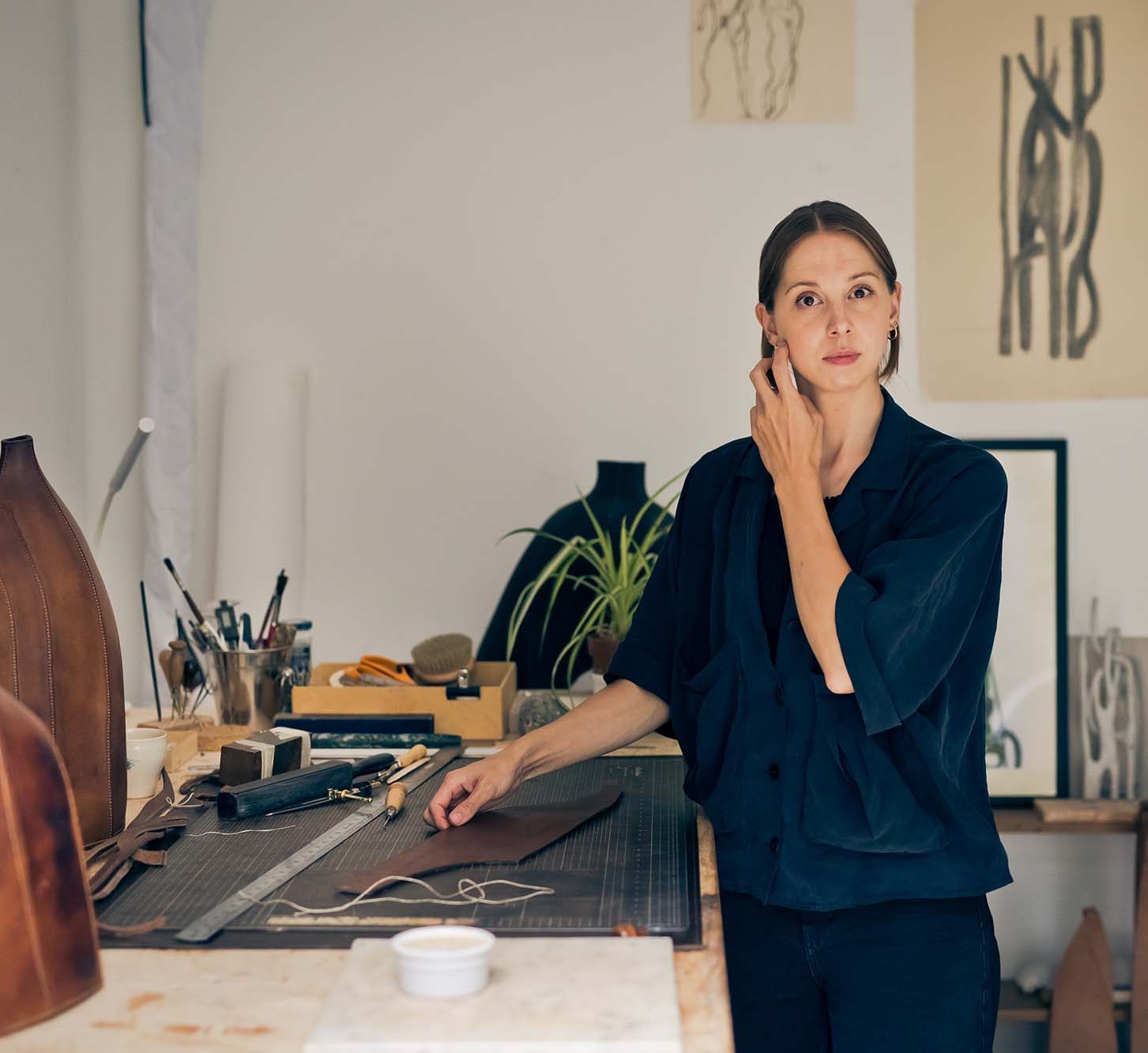
Dream Maker
In her sleep, Frances Pinnock finds inspiration for her figurative leather sculptures.
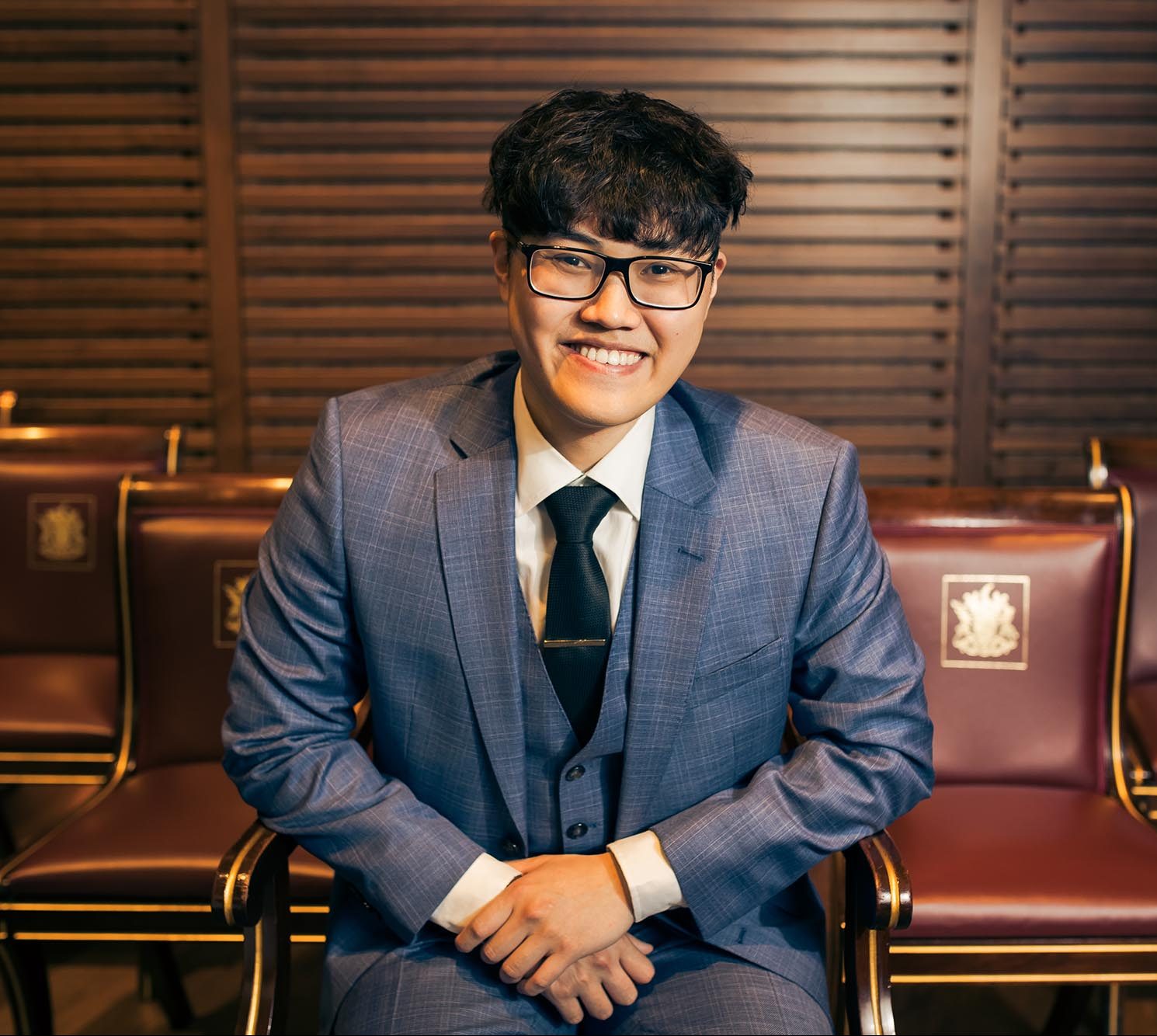
Leathersellers’ Scholarships at Colfe's School
Celebrating the long-term success of the Leathersellers’ Scholarships at Colfe’s School.
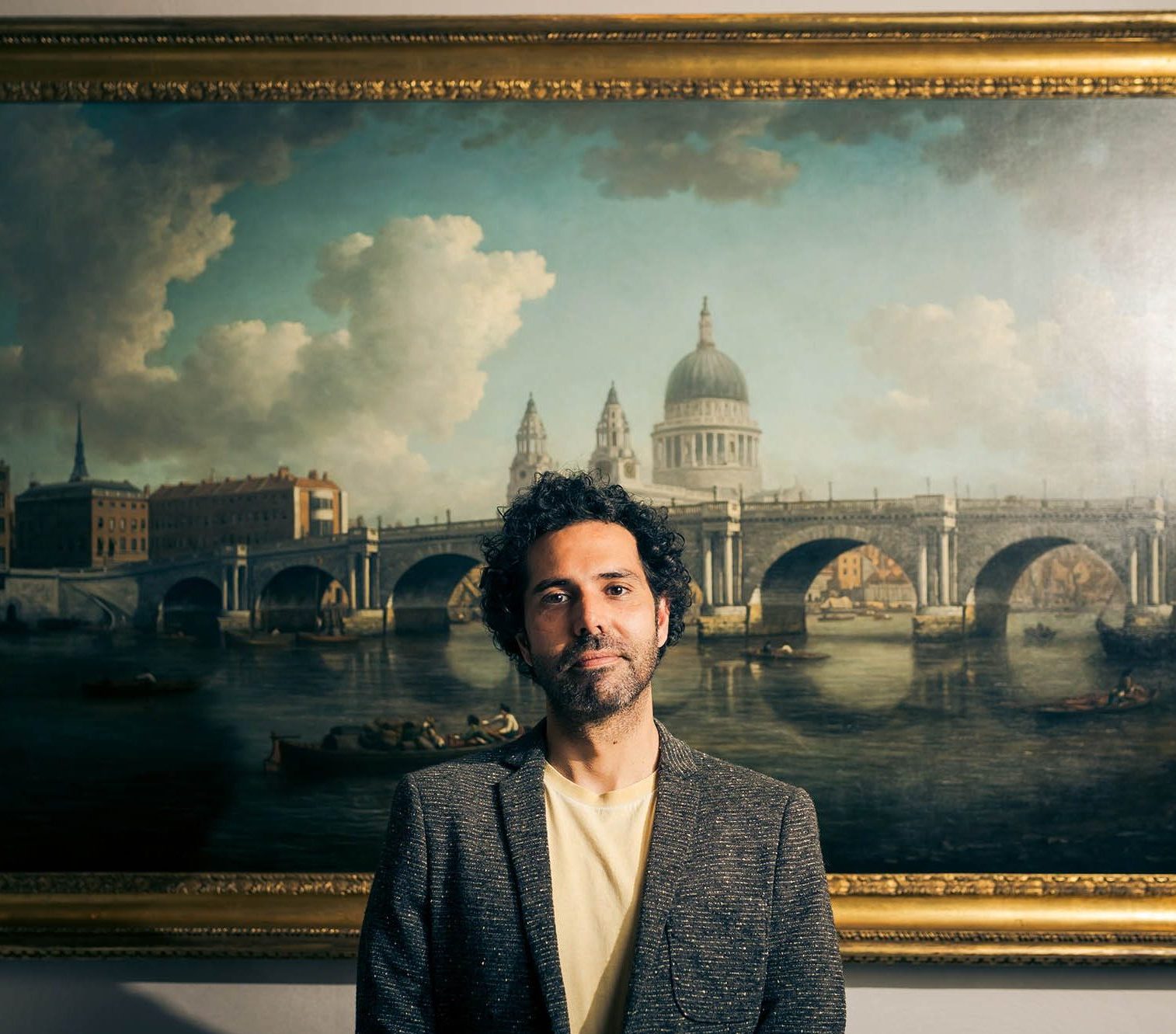
Alumni - Saher Samman
Saher received the Leathersellers’ Emerging Talent Award upon graduating from the London College of Fashion. He currently works as a leather costume modeller for HBO.